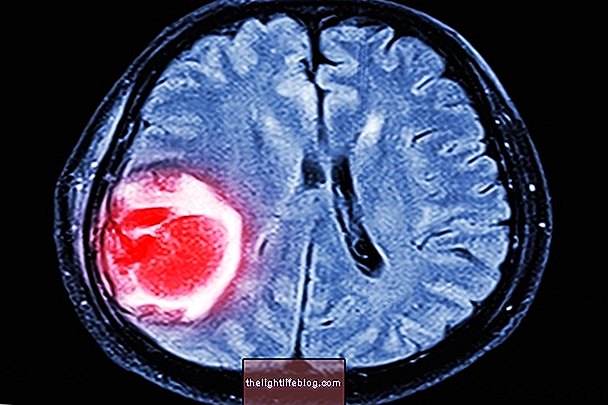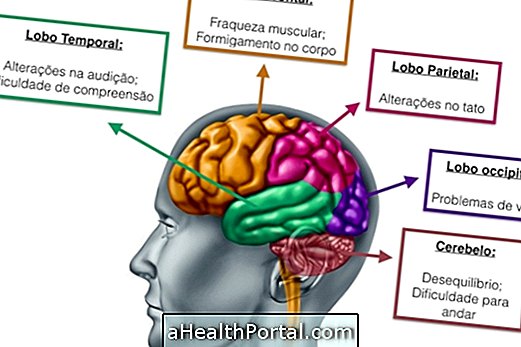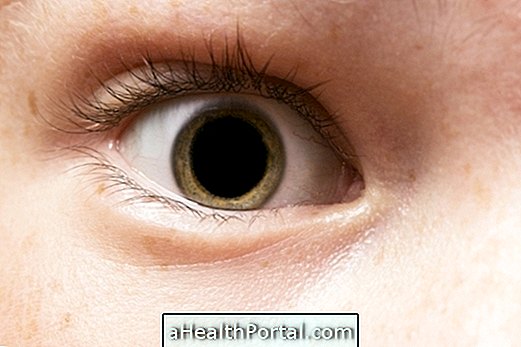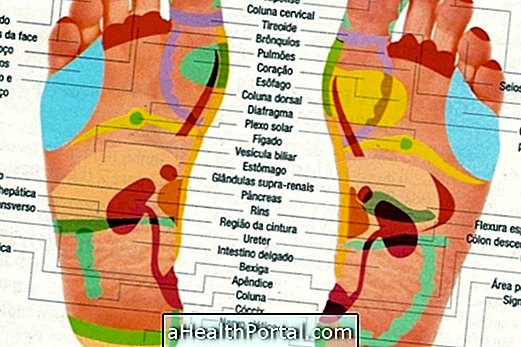Multiple sclerosis manifests itself through symptoms that become more evident during the periods known as crisis or outbreaks of the disease, which will arise throughout life, or due to progression of the disease. Thus, these can be very different, varying from one person to another, and may regress, disappearing completely when performing the treatment, or not, leaving some sequels.
Usually the treatment of multiple sclerosis is done by taking medication to decrease the progression of the disease, corticosteroids to reduce the intensity and the time of the seizures and analgesic or muscle relaxants as needed. Learn more details of the basis of multiple sclerosis treatment.
How to deal with each symptom of Multiple Sclerosis
Some symptoms that may arise in periods of crisis, or as a form of progression of multiple sclerosis are:
1. Tingling or numbness in the body
This is a common symptom in people diagnosed with multiple sclerosis, and can appear anywhere in the body, including the face. It is usually caused by increased heat or excess activity or physical exertion.
How to treat: Treatment can be done by increasing the dose of medication indicated by the neurologist in addition to performing physiotherapy sessions. Stretching exercises, muscle strengthening and specific physiotherapy techniques can be used to normalize body sensation.

2. Headache or migraine
Headache and migraine are very common in people with multiple sclerosis because demyelination especially affects the optic nerve, also causing visual changes. Migraine can be a sign of a multiple sclerosis crisis or not, and may arise with no relation to a crisis.
How to treat: Migraine remedies indicated by the neurologist can be used and techniques such as passing a pebble of ice wrapped in a napkin sheet can be an easy strategy that removes heat and reduces headache in a short time. At this stage you should avoid stimulant foods like coffee and coke, and you may prefer a glass of orange juice. Check out how eating can help fight migraines.
3. Lack of muscle strength and loss of balance
Decreased muscle strength, loss of balance, and consequent difficulty walking are common during a multiple sclerosis crisis. This symptom can occur at a time of outbreak, where the person may need to use a walking stick, crutches or wheelchair, recovering after a few weeks or months, or may be definite due to muscle paralysis due to disease progression.
How to treat: You should perform exercises that strengthen large muscle groups, do physiotherapy and maintain active life by practicing physical activity regularly, such as swimming or clinical Pilates, for example. This is able to strengthen muscles and cause people to stop using walking sticks or crutches, recovering completely. However, in the progressive form of the disease, the person is less likely to recover completely, being dependent on the use of wheelchairs, but even then it is necessary to do physiotherapy to avoid muscle contractures and scabs that can appear on the skin.

4. Memory lapses and difficulty concentrating
People diagnosed with multiple sclerosis for many years may experience recent memory loss and have more difficulty concentrating, having more difficulty organizing their thoughts, as it did before.
How to treat: Making memory games, sudoku and taking medicine and memory supplements can be useful and indicated by your doctor. Check out the foods that can help to boost memory.
5. Urinary or faecal incontinence
Another consequence of multiple sclerosis is the loss of total control over urine and feces. This symptom may be mild initially but if untreated it tends to worsen, causing embarrassment.
How to treat: Physiotherapy should be done with Kegel exercises to strengthen the pelvic floor muscles, exercises like hipopressive gymnastics to strengthen the abdomen at the same time. Biofeedback and ball exercises placed inside the vagina may also be indicated to help control urine. In certain cases, surgery to sew the pelvic floor muscles or the sagging bladder may be necessary. Learn more about urinary incontinence surgery.
Here's how to do kegel exercises in this video:

6. Vision problems
Optic neuritis, which is a type of optic nerve inflammation, is a common disorder in multiple sclerosis. This symptom is not always related to a period of disease outbreak, being present more frequently throughout life. The person may have blurred or blurred vision and a feeling of pain in the back of the eye.
How to treat: Your doctor may recommend eye examinations, use eye drops to maintain good eye lubrication, and if necessary you may need glasses and corticosteroids to help speed recovery in some cases. Although, in some cases, recovery is complete, some sequelae may remain, such as difficulty in differentiating colors, visual field changes, light sensitivity or difficulties in evaluating distances, for example. Learn more about optic neuritis.
7. Excessive tiredness
People with multiple sclerosis become tired with less physical exertion, and this symptom can last for weeks or months, intensifying in the hottest periods of the year. Therefore, climbing a flight of stairs may be more difficult and cause more tiredness during the summer than in the winter. This symptom occurs in both progressive multiple sclerosis and multiple sclerosis
How to treat: You should avoid hot spots, preferring mild temperatures and avoid strenuous activities, exercises should be performed slowly and with a longer interval, however it is not recommended to stop physical therapy or stop exercising regularly. Also I do not recommend staying too long at rest.

8. Shortness of breath
The feeling of shortness of breath is more common in the more advanced stage of the disease, and especially affects the progressive form of the disease, when the respiratory muscles are affected and does not allow a good entrance of air, and also decreases the effectiveness of the cough, which is no longer able to completely eliminate the airways, becoming weak and inefficient.
How to treat: Respiratory physiotherapy with procedures and use of small devices that help to eliminate secretions of the lungs.
9. Depression
Multiple sclerosis is a neurodegenerative disease that can cause major changes and difficulties in the person's daily life, and with this, it can be difficult to deal with emotions and lose interest in life. A person may be sad most of the time and be insecure in fear of tomorrow, needing to find a new motivation to live.
How to treat: The doctor may prescribe antidepressant medications, but psychology sessions may also be helpful for the person to best suit their reality and limitations. Group therapies also achieve good results.
These symptoms do not all occur at the same time, but may decrease the quality of life of the patient with multiple sclerosis, so whenever a symptom arises the neurologist who accompanies the case must be informed in order to adjust the dose and verify the need to exchange medicines against sclerosis.






















